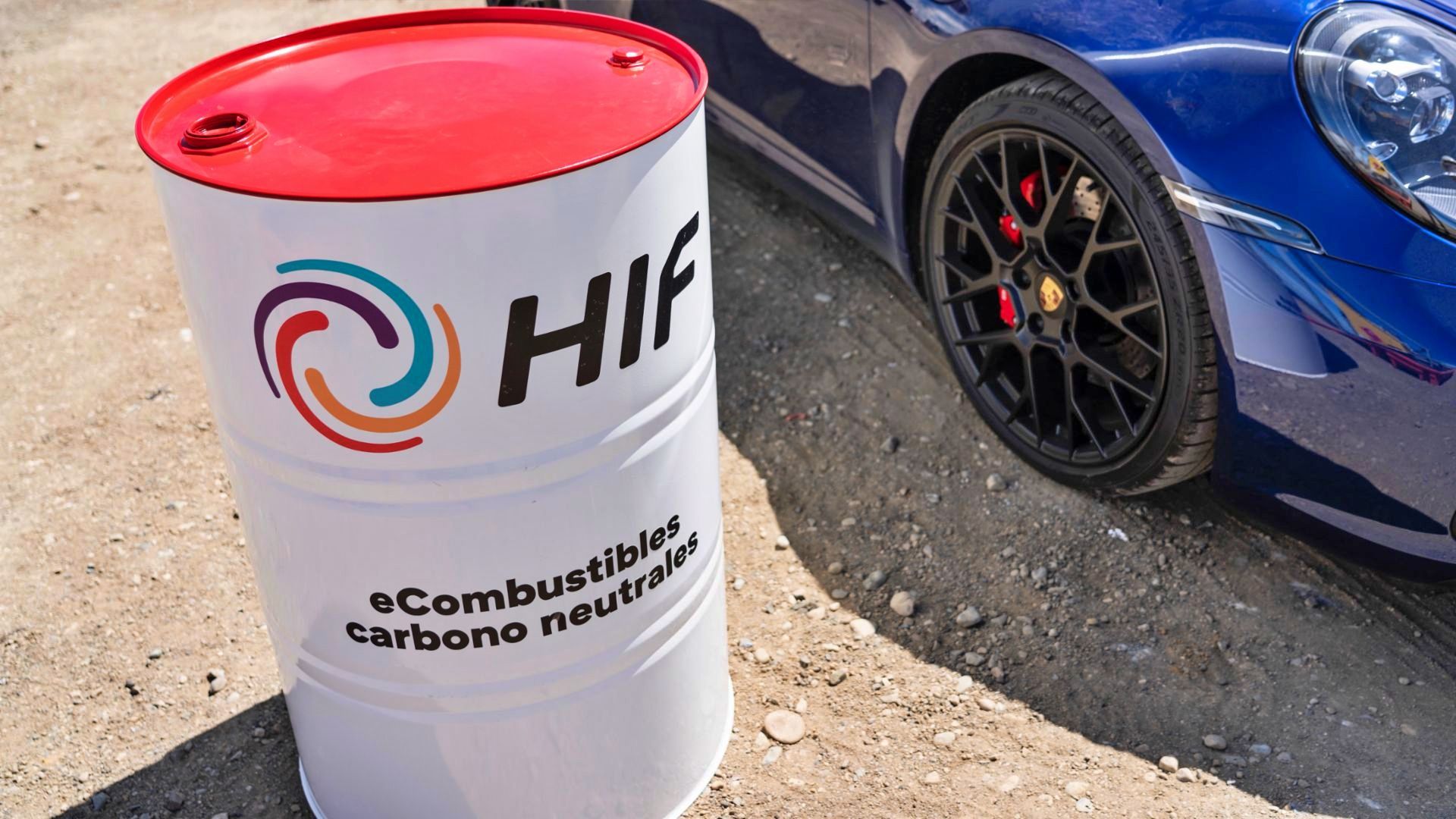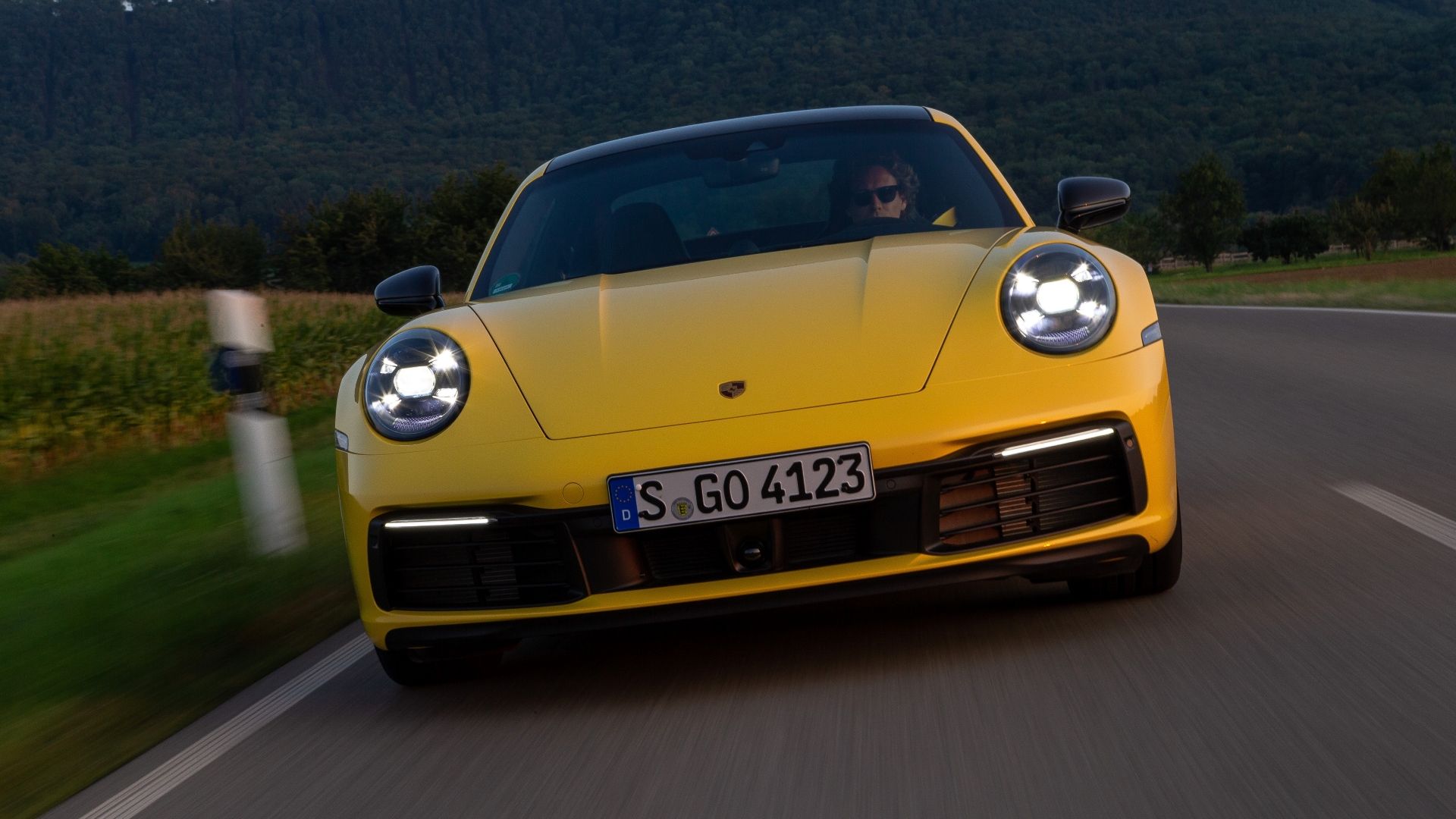While most manufacturers are set to go fully or mostly electric by 2030, a few are working towards preserving our beloved, internal-combustion engine. Porsche is among those car manufacturers that aim to de-carbonize traditional motoring, and so far, the German automaker has invested over $100.0 million in e-Fuels.
The European Commission, which is the executive body of the European Union, recently included synthetic fuels as an exception to the proposed ban on internal-combustion engines, said to take effect in 2035. Porsche seems to have figured out an ingenious way to keep the internal-combustion engine alive by replacing liquid dinosaurs with carbon-neutral, synthetic fuels. But how exactly does it work, will we be able to get it sooner rather than later, and should we put our trust in it, these are the questions we will address below.
Why E-Fuels?
There are a couple of reasons why synthetic fuels make sense, not just for Porsche, but for a wider spectrum of transportation, not limited to the automotive. On a smaller scale, Porsche says producing EVs is more expensive compared to combustion-powered vehicles and fully-converting its entire lineup to electricity will take too long. E-Fuels are another way of accelerating the process of de-carbonizing the brand’s lineup.
Moreover, Porsche’s flagship model, the 911, is one of the most revered sports cars ever made and has a cult following. Fans and owners of the model, regardless of whether air-cooled or water-cooled, are keen on the 911’s heritage, and leaving the rear-engine model combustion-powered is one way of preserving that heritage. Moreover, the Porsche 911 currently accounts for 13 percent of the brand’s sale, which is more than the Porsche Taycan’s 11 percent, and that’s the most successful EV, made by a legacy automaker.
E-Fuels can also be utilized in marine and aviation transport. While so far, electricity is proving to be a viable alternative to fossil fuels in the automotive sector, it wouldn’t work nearly as good in marine and aviation applications. Battery-electric propulsion delivers less-than-ideal results in these applications, mostly, due to the weight of ships and airplanes. With that said synthetic fuels seem to be a more universal solution than electric propulsion, even though it will not completely replace electricity.
How Does Porsche’s E-Fuel Work?
To understand the ins and outs of Porsche’s synthetic fuel, Donut Media recently went on a trip to Porsche’s Synthetic fuel refinery, in Punta Arenas, Chile. The place is quite remote for any form of distribution to make financial sense, but there is good reason for the choice of location. Wind plays big role in creating Porsche’s synthetic fuel and this particular area in Chile happens to be one of the windiest places on the planet.
Hydrocarbon is a main ingredient of gasoline. As the name suggests, it consists of hydrogen and carbon and there’s plenty of it in crude oil. But there is another way to get those two elements. There’s hydrogen in water and carbon dioxide in the air, and Porsche’s factory in Chile is built specifically to bond these two elements together in order to create hydrocarbon in a much more environmentally-friendly way.
Essentially, water and air are the key components for Porsche’s e-Fuel. Hydrogen is obtained through a process called electrolysis, which utilizes a constant electrical current through the water (H20), which in turn separates the hydrogen in the negative pole and releases oxygen in the atmosphere as explained by Donut Media. Carbon dioxide is captured (literally) through a “direct air capture devise”.
In layman’s terms, it is a stack of turbines that suck air through a plethora of heated filters, containing solvents that capture carbon dioxide. Essentially, dirty air comes in, clean air comes out, and concentrated carbon dioxide is captured along the way. In a stroke of poetic genius, Porsche has found a way to utilize the harmful particles, produced by internal-combustion engines, to create environmentally-friendly fuel.
Another special device performs methanol synthesis, which is the process of mixing the hydrogen gas (H2) and carbon dioxide (CO2). The result is methanol, but it still needs to go through another synthesis, involving heat and vaporization, in order to produce a synthetic gasoline blend, consisting of heavy and light gasoline.
The most interesting part is that Porsche’s synthetic blend features the same molecular structure as conventional gasoline and yet, it doesn’t pollute. A test drive done by Donut Media revealed that a Porsche Panamera Sport Turismo Turbo S loaded with 40 liters (10.56 US gallons) of synthetic gasoline, drives and sounds exactly the same way as if it was running on traditional gasoline.
How Viable Is Porsche’s e-Fuel?
In order to answer that question, we have to look into the production method. At this point in time, the logistics are not properly sorted out. Since Porsche’s only e-Fuel production plant is located in Chile, and even that one isn’t fully-operational yet, transporting the synthetic fuel to the biggest markets will be expensive and at this point in time, still done by transportation, largely utilizing fossil fuels. A key factor in the e-fuel production being environmentally-friendly has to do with the wind energy harnessed for the manufacturing process.
Then, there’s the question of how much of the eco-friendly “juice” Porsche can make. Currently, the production output of 34,000 gallons (128,704 liters) with a goal of producing 15 million gallons (56.8 million liters) by 2030 or 1.0 billion liters by 2028 if we add Porsche's e-fuel plants in Texas and Australia. That’s still less than the 369 million gallons of fuel a day, U.S. motorists, alone, use.
While this could question the viability of Porsche’s endeavors in the area of synthetic fuels, Porsche managing director, Daniel Schwarz, said in front of CNBC that their access to mother-company Volkswagen’s scale factory, which will be crucial to boosting production output of e-fuels dramatically, as well as make them more accessible price-wise. As it stands, Porsche’s e-fuel sits at $40 a gallon, which is roughly six times more expensive than the current price of traditional gasoline in the U.S.
It will be some time before e-fuel becomes widely accessible or affordable enough for everyone to use. Porsche’s managing director for e-Fuels, Karl Dums, said that with enough production scale, it is possible for synthetic fuels to be competitive. Any new technology is, at first, expensive and not widely-accessible or particularly practical, but Porsche has proven we don’t have to let go of the internal-combustion engine in order to be carbon-neutral.


